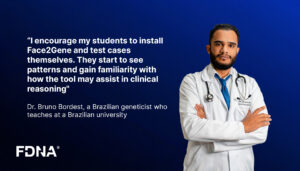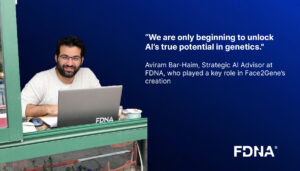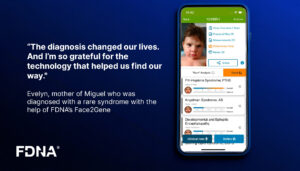April 30, 2017
The article highlights FDNA’s breakthrough technology in expediting diagnosis and reducing the cost of care for developmental and genetic disorders. Face2Gene, an AI-driven platform, employs facial recognition to analyze patient photos and identify distinct markers of over 2,000 rare genetic disorders. This innovative decision support tool streamlines the diagnostic process, providing healthcare professionals with faster, more accurate preliminary assessments. The article emphasizes the transformative potential of Face2Gene in improving diagnostic accuracy and patient outcomes, especially in areas with limited access to genetic specialists. FDNA’s technology represents a significant advancement in the early detection and treatment of rare diseases.


